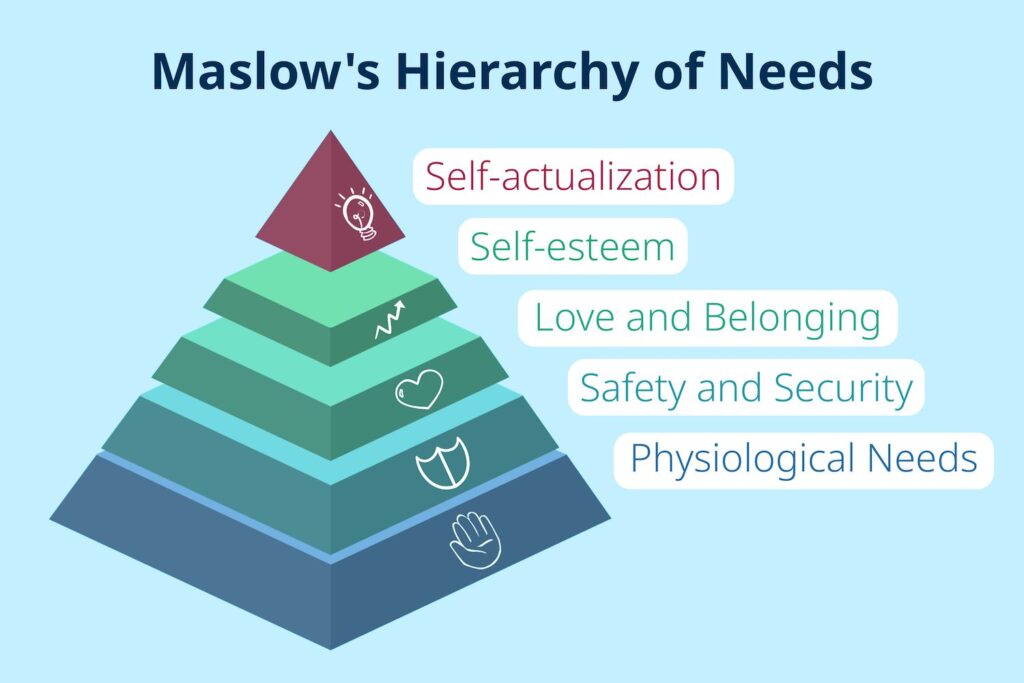Maslow’s Hierarchy for Team Building: Applying Psychological Principles to Strengthen Teams

Team building is more than just organizing fun activities or fostering better communication. It’s about understanding the psychological needs of individuals within the team and fulfilling those needs to create a cohesive and motivated group. One effective way to approach this is by applying Maslow’s Hierarchy of Needs to team building. This theory, developed by psychologist Abraham Maslow, outlines five levels of human needs that, when met, can lead to self-actualization and peak performance. By using these principles, leaders can create an environment where teams thrive.
Understanding Maslow’s Hierarchy of Needs
Maslow’s hierarchy is typically depicted as a pyramid, with the most basic needs at the bottom and the higher-level needs at the top. These levels are:
- Physiological Needs: Basic survival needs such as food, water, and rest.
- Safety Needs: Security and protection from harm.
- Social Needs (Love and Belonging): Relationships, friendships, and group belonging.
- Esteem Needs: Recognition, respect, and a sense of accomplishment.
- Self-Actualization Needs: The pursuit of personal growth, creativity, and reaching one’s full potential.
Let’s explore how each of these levels can be used to build stronger, more effective teams.
1. Physiological Needs: Setting the Foundation
While physiological needs may seem more relevant to individuals, they also apply in the workplace. Providing a comfortable work environment with proper lighting, seating, temperature control, and access to amenities like coffee or snacks can have a significant impact on team performance. Virtual teams can also address these needs by considering ergonomic home office setups or offering breaks during extended meetings.
Tips for Team Building:
- Provide healthy snacks or catered lunches during meetings.
- Ensure adequate breaks and time for rest.
- Promote a work-life balance by not overloading team members with work.
2. Safety Needs: Creating a Secure Environment
For a team to function effectively, members need to feel safe, both physically and psychologically. This involves creating a culture of trust where team members are not afraid to voice their opinions or make mistakes. Safety also encompasses job security, clear roles, and guidelines to prevent confusion.
Tips for Team Building:
- Encourage a culture where team members feel safe to share ideas without fear of judgment.
- Implement clear health and safety protocols, especially for onsite teams.
- Provide resources for mental health support, such as counseling services.
3. Social Needs: Fostering Connection and Belonging
Humans are inherently social creatures, and a sense of belonging is crucial for team cohesion. Creating opportunities for bonding outside of work-related tasks can significantly improve group dynamics. Social activities help build relationships, encourage collaboration, and foster trust.
Tips for Team Building:
- Organize team-building events like outings, retreats, or virtual games.
- Encourage informal social interactions, such as team lunches or coffee breaks.
- Create mentorship programs to connect new and experienced team members.
4. Esteem Needs: Recognition and Achievement
Esteem needs are about feeling respected and valued. Providing recognition for achievements, whether big or small, helps build a sense of accomplishment and motivates team members to perform at their best. Celebrating individual and team success fosters a positive atmosphere and strengthens morale.
Tips for Team Building:
- Establish a recognition program to reward outstanding performance.
- Set achievable goals and celebrate when they are met.
- Provide constructive feedback that encourages growth while recognizing efforts.
5. Self-Actualization: Empowering Growth and Fulfillment
At the top of the pyramid is self-actualization, where individuals seek to realize their full potential. Teams that encourage self-actualization allow members to explore their creativity, take on leadership roles, and pursue professional development. This level emphasizes continuous growth and empowerment.
Tips for Team Building:
- Offer learning and development opportunities such as training programs or workshops.
- Encourage team members to set personal and professional goals.
- Allow space for creativity and innovation within projects.
Applying Maslow’s Hierarchy to Virtual Teams
With the rise of remote work, applying Maslow’s hierarchy to virtual teams has become even more important. Team members working from home face unique challenges, such as isolation and burnout. Addressing these needs with virtual team-building activities, regular check-ins, and flexible work arrangements can help maintain a strong sense of community and motivation.
Conclusion
Maslow’s Hierarchy of Needs provides a valuable framework for team building by addressing the foundational needs of individuals to create a more harmonious and high-performing team. By understanding and fulfilling these needs at each level, leaders can cultivate a supportive environment where every team member feels valued, motivated, and empowered to reach their full potential.
Building a successful team is not just about achieving goals; it’s about creating a culture where people can grow, connect, and thrive together.






Responses